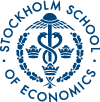No 2017:1: For Patriotism and Profit: Advertising in Service of the Swedish Government 1935-1985
Erik Lakomaa ()
Additional contact information
Erik Lakomaa: Institute for Economic and Business History Resarch, Postal: Stockholm School of Economics, P.O. Box 6501, SE-113 83 Stockholm, Sweden
Abstract: Beginning just before the outbreak of World War II, the advertising industry in (neutral) Sweden began cooperating with the government. This cooperation was highly beneficial for the industry during the war as blockades and rationing caused the civilian advertising market to almost disappear. After the war, the cooperation continued, albeit in relation to primarily military matters. Later, however, the government began procuring advertising and media services on largely commercial grounds. Using documents (including previously classified records) from government agencies, trade organizations and individual advertising companies, this study presents the history of the special relationship between private advertising companies and the Swedish government. In the half century after the first examples of government advertising during World War II, distinct phases can be identified. The first phase began with the end of World War II, when government advertising was considered inappropriate during peacetime and cooperation occurred almost exclusively within the National Information Service (an organization similar to the US War Advertising Council), which prepared wartime advertising for World War III. The second phase began in the late 1960s, when the Swedish government began running large public advertising campaigns. The first campaign was connected with the introduction of right-hand traffic in 1967, and later campaigns were aimed at, for example, energy savings and public health. Finally, the third phase began in the late 1970s, when advertising developed into an integral part of public sector activities and government agencies and municipalities became major buyers of media and advertising services. In addition to the history of the relationship between the industry and the government, this paper provides an analysis of the incentives for cooperation and the influence of the public advertising market on the industry structure.
Keywords: Advertising; cold war; Sweden; war information services
46 pages, October 29, 2017
Full text files
haechi2017_001.pdfFull text
Questions (including download problems) about the papers in this series should be directed to Erik Lakomaa ()
Report other problems with accessing this service to Sune Karlsson ().
RePEc:hhs:haechi:2017_001This page generated on 2024-09-13 22:14:50.

